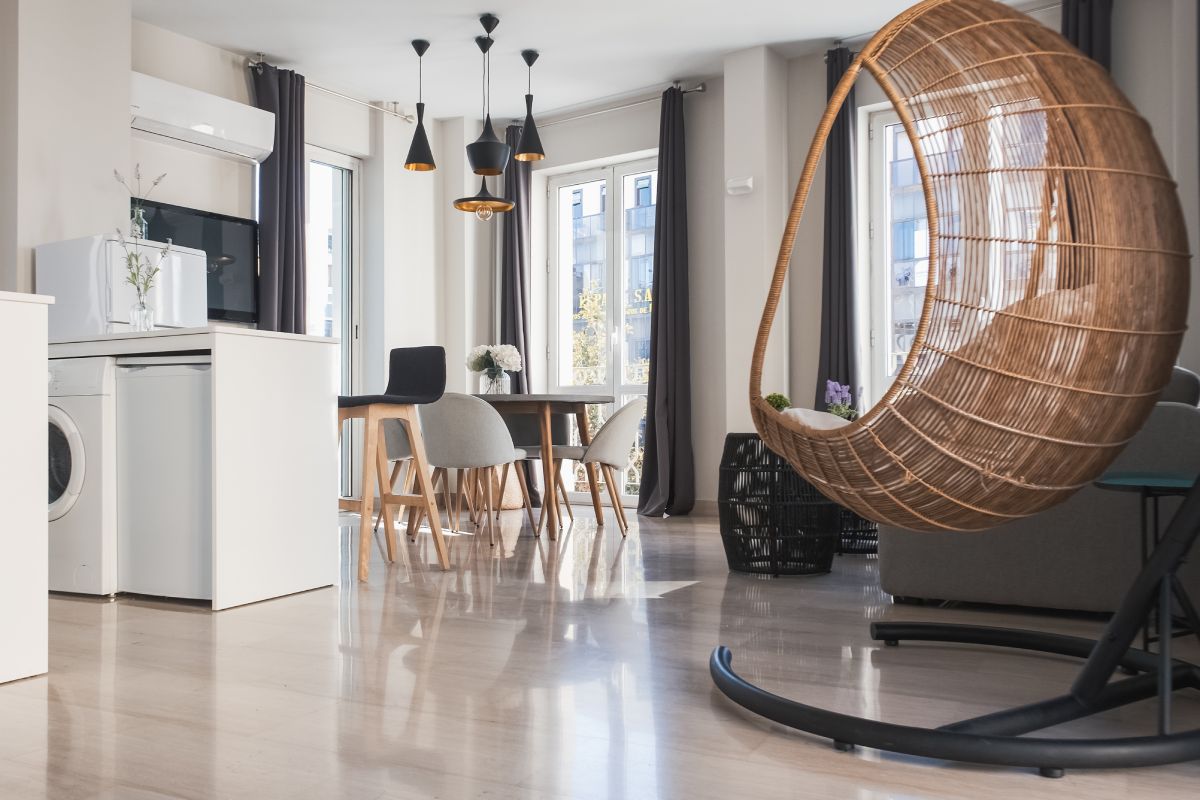When it comes to interior design there are certain principles that must be adhered to whether you are looking at residential or commercial properties. These primarily include enhancing the space to make it look and feel better. There are 7 core principles of interior design that can be applied to all kinds of properties, while there are important differences in style and purpose that should be considered.
If you feel that your commercial property could benefit from such an enhancement, read on to discover the core principles involved, and what the main differences are between commercial and residential interiors…
What are the principles of commercial interior design?
Commercial interior designers use the same basic principles of interior design, applied to the commercial sphere. Instead of simply designing a space for homeowners as a residential interior designer would, they have to consider the business owner and the customers, the employees and the clients.
Commercial interior design pairs functionality with aesthetics to create your ideal commercial space. The main principles of interior design are:
1 – Balance
As important in a commercial space, as it is in the home, balance is key to a good interior design. You can choose symmetrical or asymmetrical balance or even radial balance in your commercial interior. For the latter, think of circular stairs going down into the café or circular tables and chandeliers in a hotel.

Example of balanced design
2 – Emphasis
This is where you direct focus in the space. For a commercial property, this could be the cash register, the view or really anything that you want people to pay attention to. You can use large impressive furniture, clever lighting and more to achieve your aims.
3 – Rhythm
This is a core principle, and one that can lead people where you want them to go or encourage them to look where you wish. Rhythm via progression is a popular choice in many commercial buildings, beginning with a bright entrance and leading you to a cosier or dimmer seating area or store. You can also use repetitive and transition rhythms, the latter of which is achieved using arches and curved furnishings.
4 – Contrast
When you picture contrast you probably immediately go for monochromes like black and white walls, and you can certainly use this principle to great effect through high-quality commercial painting. You can use textures and layering to make your space more interesting and dynamic.
5 – Scaling
This is clearly an important one for all properties including commercial ones. If we again take the example of a café, having too big or too small furniture in a space would have a big impact on the customers’ enjoyment. A well-designed café also requires you to consider the functionality for employees trying to get across a crowded room.
6 – Harmony and Unity
Creating a harmonious space is truly one of the key parts of interior design, and in a commercial space, this can have big ramifications. If there is something jarring in the room, something that draws the eye negatively and snaps you out of the thoughts and feelings the design was supposed to inspire, you could lose a sale or a customer.
7 – Details
They say the devil is in the details, and without the right details, your commercial space could too easily look and feel hellish rather than heavenly. The small details and subtle touches are just as important as the bigger picture, and can go a long way to helping you reach the look and function that you are trying to achieve.
What is the difference in style between commercial and residential interior design?
Now that you understand the core principles of interior design and which ways they can impact commercial spaces, it is important to differentiate between commercial and residential interior design. Here we will take a look at what each means, and how they stand apart from each other…

What is the typical style of residential interior design?
Residential interior design involves designing or redesigning interiors for homes and residential properties. This could be for a homeowner looking for a change, in which case their thoughts, opinions and style would be of the utmost importance. What the homeowner wants is what should happen, though any interior decorator would no doubt offer opinions and advice on the core principles.
For houses that have not yet been lived in or sold, the style of the interior design would likely be far more neutral. When people look at houses and try to picture themselves living there, minimalistic designs and a neutral space can better help their imagination. If it is their home, however, the style will very much be their style whether that includes garish colours or simple monochromes.

What is the typical style of commercial interior design?
Commercial interior design deals with offices and businesses of all kinds, and so has a rather different style. Or at least many different kinds of styles depending on the business, who uses it and its general purpose. An office building won’t have the same interior as a café, for instance, or a shop or hotel.
Commercial interior design looks at the needs of the property owner, the employees and the customers that might spend time in the building. Some commercial properties may prefer a more simplistic and general style, while others will look to go all out and be unique and memorable.
There is more to consider than just one person’s preferences, so it can be trickier to settle on one style with commercial interior design. Regardless of the type of interior design, however, functionality and aesthetics will still play a huge role.
Final thoughts
The core principles of interior design don’t change that much whether you are designing a residential or commercial building, but they can still be applied in different ways. If the core tenants of interior design are functionality and aesthetics, then residential and commercial interior design both have a great deal in common.
The differences in style will always vary based on who the design is for, what they need, and what they like. If you are considering redesigning your home or commercial space, using the right interior designer can really help you to settle on the perfect style to meet all your needs. Both functional and in terms of looks.





